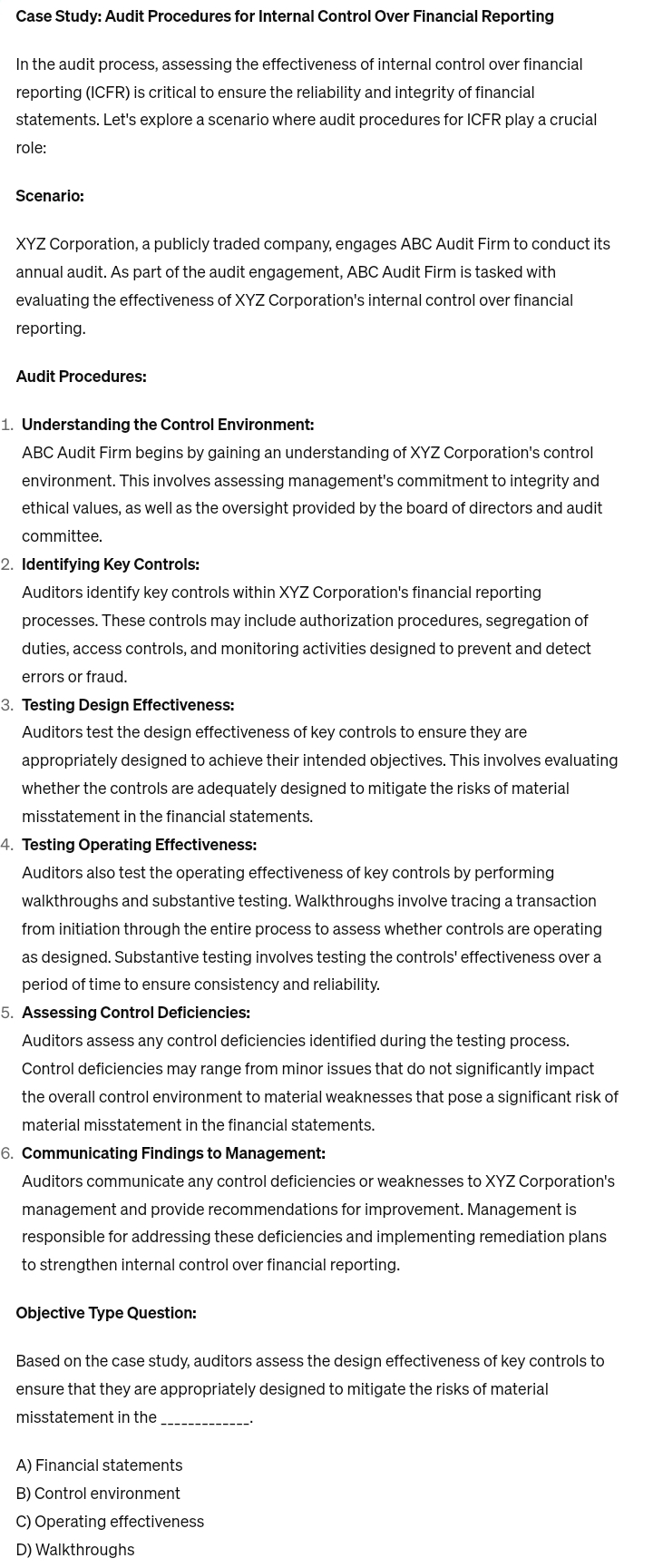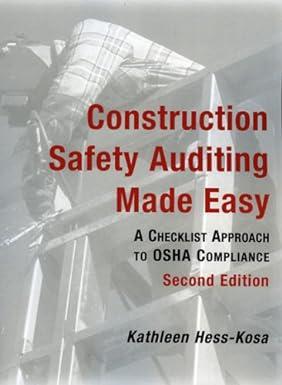Answered step by step
Verified Expert Solution
Question
1 Approved Answer
Case Study: Audit Procedures for Internal Control Over Financial Reporting In the audit process, assessing the effectiveness of internal control over financial reporting ( ICFR
Case Study: Audit Procedures for Internal Control Over Financial Reporting
In the audit process, assessing the effectiveness of internal control over financial reporting ICFR is critical to ensure the reliability and integrity of financial statements. Let's explore a scenario where audit procedures for ICFR play a crucial role:
Scenario:
XYZ Corporation, a publicly traded company, engages ABC Audit Firm to conduct its annual audit. As part of the audit engagement, ABC Audit Firm is tasked with evaluating the effectiveness of XYZ Corporation's internal control over financial reporting.
Audit Procedures:
Understanding the Control Environment:
ABC Audit Firm begins by gaining an understanding of XYZ Corporation's control environment. This involves assessing management's commitment to integrity and ethical values, as well as the oversight provided by the board of directors and audit committee.
Identifying Key Controls:
Auditors identify key controls within XYZ Corporation's financial reporting processes. These controls may include authorization procedures, segregation of duties, access controls, and monitoring activities designed to prevent and detect errors or fraud.
Testing Design Effectiveness:
Auditors test the design effectiveness of key controls to ensure they are appropriately designed to achieve their intended objectives. This involves evaluating whether the controls are adequately designed to mitigate the risks of material misstatement in the financial statements.
Testing Operating Effectiveness:
Auditors also test the operating effectiveness of key controls by performing walkthroughs and substantive testing. Walkthroughs involve tracing a transaction from initiation through the entire process to assess whether controls are operating as designed. Substantive testing involves testing the controls' effectiveness over a period of time to ensure consistency and reliability.
Assessing Control Deficiencies:
Auditors assess any control deficiencies identified during the testing process. Control deficiencies may range from minor issues that do not significantly impact the overall control environment to material weaknesses that pose a significant risk of material misstatement in the financial statements.
Communicating Findings to Management:
Auditors communicate any control deficiencies or weaknesses to XYZ Corporation's management and provide recommendations for improvement. Management is responsible for addressing these deficiencies and implementing remediation plans to strengthen internal control over financial reporting.
Objective Type Question:
Based on the case study, auditors assess the design effectiveness of key controls to ensure that they are appropriately designed to mitigate the risks of material misstatement in the
A Financial statements
B Control environment
C Operating effectiveness
D Walkthroughs

Step by Step Solution
There are 3 Steps involved in it
Step: 1

Get Instant Access to Expert-Tailored Solutions
See step-by-step solutions with expert insights and AI powered tools for academic success
Step: 2

Step: 3

Ace Your Homework with AI
Get the answers you need in no time with our AI-driven, step-by-step assistance
Get Started


